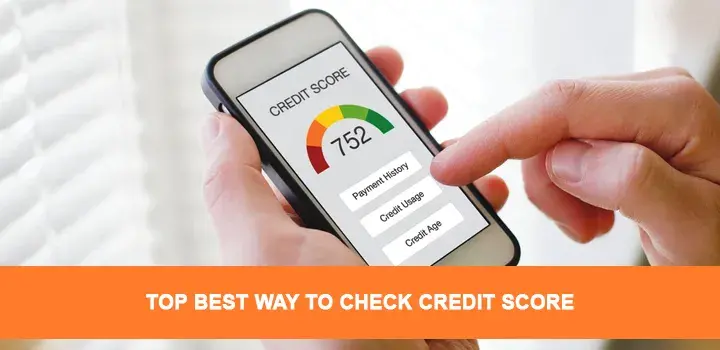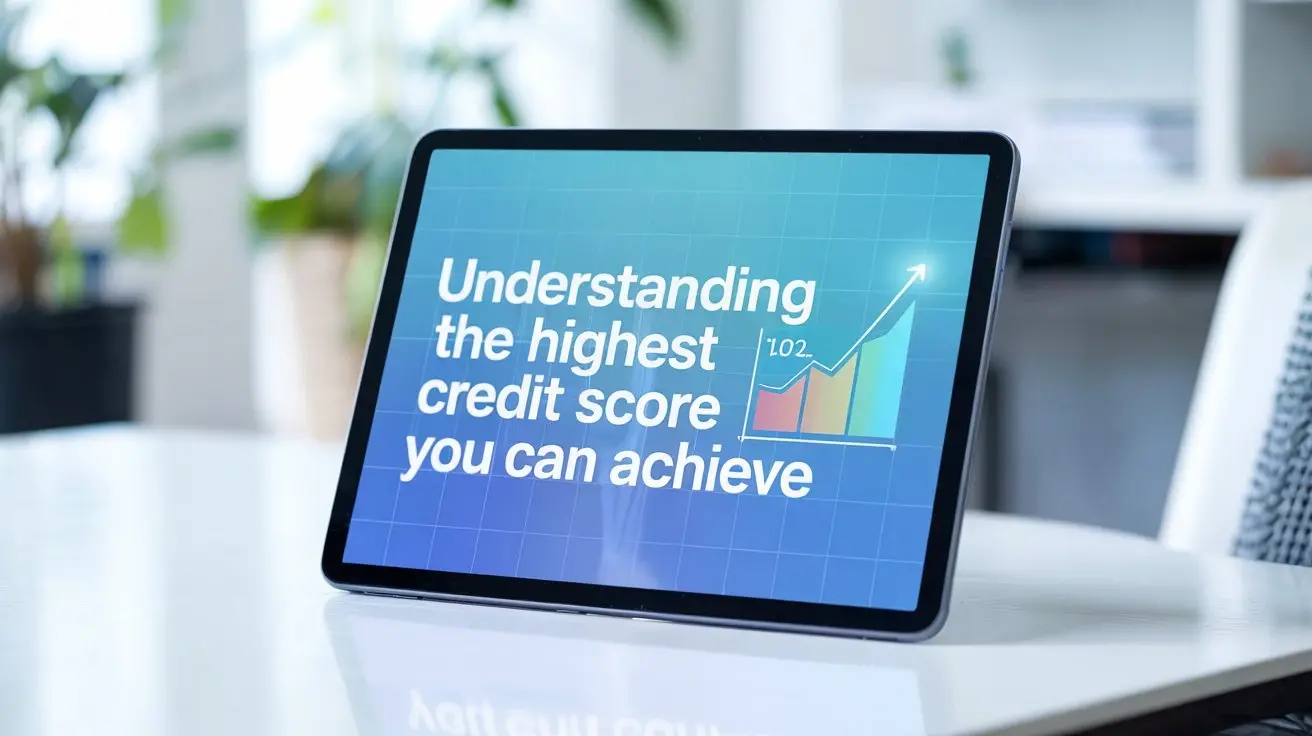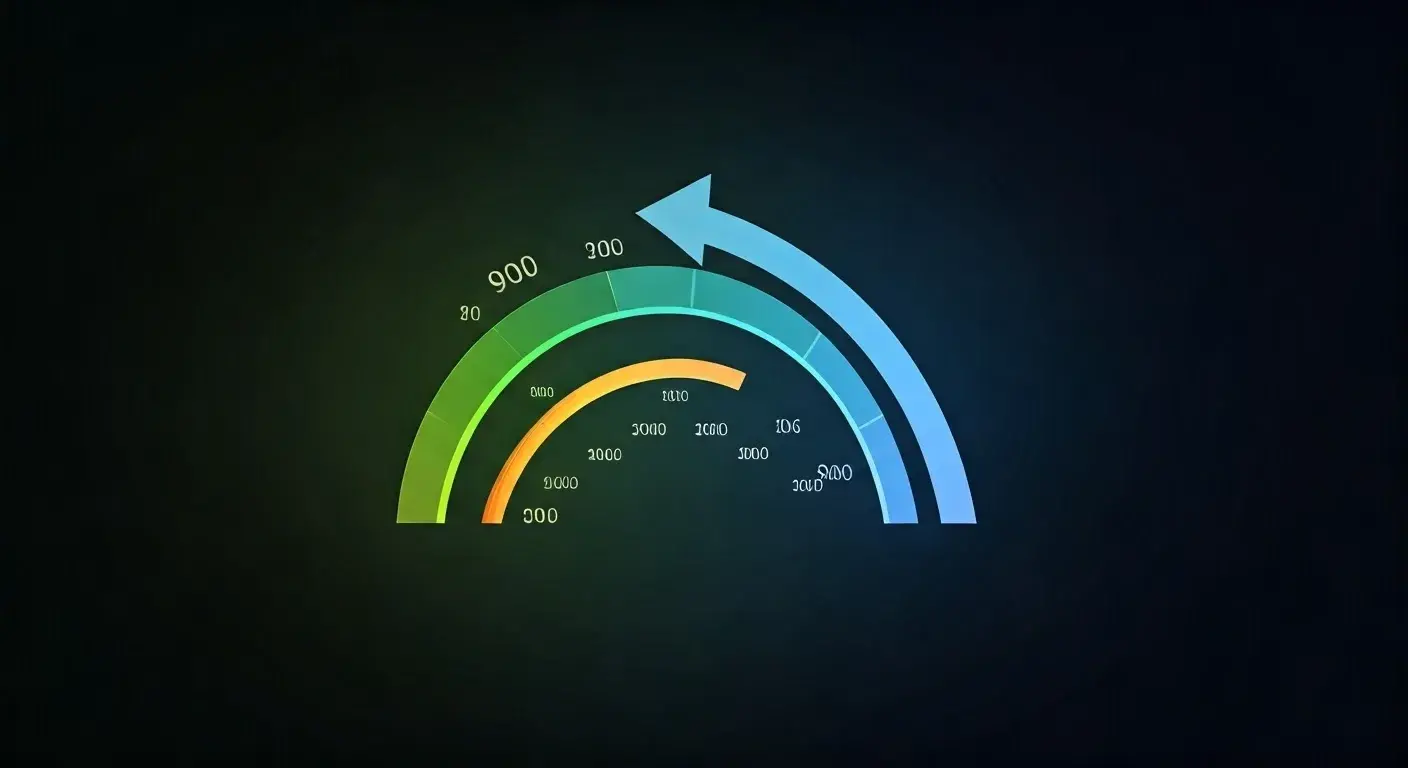-
Posted on: 24 Dec 2022

-
Discover the definitive guide to checking your credit score in 2025. This post breaks down the top methods, their pros and cons, and the most effective strategies to access your credit report accurately and affordably, empowering you to take control of your financial health.
Understanding Credit Scores and Why They Matter
In the financial landscape of 2025, your credit score is more than just a number; it's a critical indicator of your financial trustworthiness. Lenders, landlords, and even some employers use it to assess the risk associated with extending credit, offering a lease, or providing employment. A good credit score opens doors to better loan terms, lower interest rates, and easier approval for financial products. Conversely, a poor score can lead to higher costs, limited options, and outright rejections. Understanding what influences your score and how to monitor it effectively is a cornerstone of sound financial management.
Credit scores are complex algorithms that distill your credit history into a three-digit number. This number, typically ranging from 300 to 850, provides a snapshot of your creditworthiness. The higher the score, the lower the perceived risk for lenders. This is why knowing the best way to check your credit score is paramount. It allows you to stay informed, identify potential errors, and proactively manage your financial reputation.
The scoring models most commonly used are FICO and VantageScore. While they have some differences, they both evaluate similar factors. These factors include your payment history, amounts owed (credit utilization), length of credit history, credit mix, and new credit. Each of these components plays a vital role in shaping your overall score. For instance, consistently paying bills on time is the most significant factor, accounting for approximately 35% of your FICO score. High credit utilization, meaning you're using a large percentage of your available credit, can also negatively impact your score, often making up around 30% of the calculation.
In 2025, the importance of a strong credit score cannot be overstated. Whether you're planning to buy a home, purchase a car, or simply secure a new credit card, your credit score will be a deciding factor. It influences not only the approval process but also the interest rates you'll pay, which can translate into thousands of dollars saved or spent over the life of a loan. Therefore, regularly checking your credit score using the best available methods is not just good practice; it's a necessity for navigating the modern financial world.
Top Free Ways to Check Your Credit Score
Fortunately, accessing your credit score doesn't have to come with a hefty price tag. Several reputable avenues offer free credit score checks, making it easier than ever to stay on top of your financial health. Understanding these options is the first step to finding the best way to check your credit score for your specific needs.
1. AnnualCreditReport.com
This is the official, government-mandated source for free credit reports. By law, you are entitled to one free credit report from each of the three major credit bureaus – Equifax, Experian, and TransUnion – every 12 months. In response to the ongoing economic climate and the need for greater financial transparency, access to these reports has been made more frequent. As of 2025, you can access your free credit reports weekly from each bureau via AnnualCreditReport.com.
How it works:
- Visit AnnualCreditReport.com.
- Select the credit bureaus from which you wish to obtain your report. It's often recommended to stagger your requests throughout the year (e.g., get Equifax in January, Experian in May, and TransUnion in September) to monitor your credit continuously.
- Complete the online request form. You may need to provide personal information to verify your identity.
- Review your credit report thoroughly. Look for any inaccuracies, such as incorrect personal information, accounts you don't recognize, or late payments that you know were made on time.
Pros:
- Completely free.
- Provides full credit reports, not just scores.
- Official and legally mandated source.
- Allows for identification of errors and potential fraud.
Cons:
- Doesn't always provide a credit score directly; some may offer it as a bonus.
- Requires careful review to spot discrepancies.
2. Credit Card Issuers
Many major credit card companies now offer free credit score access to their cardholders as a perk. This is a convenient way to monitor your score regularly without signing up for additional services. The scores provided are often FICO scores, though the specific model and bureau may vary by issuer.
How it works:
- Log in to your online credit card account.
- Look for a section labeled "Credit Score," "Credit Insights," or similar.
- Click to view your score. It's typically updated monthly.
Pros:
- Conveniently integrated into your existing banking.
- Usually updated monthly.
- Often provides FICO scores.
Cons:
- Only available if you have a credit card with a participating issuer.
- May only provide scores from one credit bureau.
- Doesn't provide the full credit report.
Examples of issuers offering free scores: Discover, Capital One, Citi, Bank of America, Chase, and American Express are among the many that provide this service. Always check your specific card issuer's website or app for availability.
3. Banks and Credit Unions
Similar to credit card issuers, many traditional banks and credit unions are now offering free credit score monitoring to their checking and savings account customers. This service is a valuable addition to their digital banking platforms.
How it works:
- Log in to your online banking portal or mobile app.
- Navigate to the credit score section.
- View your score and sometimes receive insights into factors affecting it.
Pros:
- Convenient for existing bank customers.
- Often updated monthly.
- Can provide a holistic view of your finances.
Cons:
- Availability depends on your financial institution.
- Typically provides only the score, not the full report.
- The scoring model and bureau used can vary.
4. Free Credit Score Websites and Apps
Numerous third-party websites and mobile applications offer free credit scores. These services often partner with credit bureaus or use their own proprietary scoring models. While convenient, it's crucial to understand what you're getting.
How it works:
- Sign up for an account on a reputable free credit score platform (e.g., Credit Karma, Credit Sesame, NerdWallet).
- Provide your personal information for identity verification.
- Access your score and often receive personalized insights.
Pros:
- Easy to access and often updated frequently (sometimes daily).
- May offer scores from multiple bureaus or different scoring models.
- Often provide credit report summaries and educational tools.
Cons:
- Scores may not be the same as those used by lenders (often VantageScore, which differs from FICO).
- These services often make money through advertising or by offering you credit products. Be mindful of marketing pitches.
- You are sharing your data with a third party.
Important Note on Free Scores: While these free services are excellent for monitoring trends and getting a general idea of your credit standing, remember that lenders often use FICO scores. The score you see on a free platform might be a VantageScore, which, while correlated, isn't identical. For critical financial decisions like mortgage applications, it's best to know which score model your lender uses and obtain that specific score.
Paid Credit Monitoring Services: Are They Worth It?
While free options are abundant, paid credit monitoring services offer a more comprehensive suite of tools and features. These services typically provide more frequent score updates, full credit reports from all three bureaus, and robust identity theft protection.
Features of Paid Services
Paid services go beyond just providing a credit score. They often include:
- Daily Credit Score Updates: Get real-time or near real-time updates on your credit score.
- Full Credit Reports: Access to your complete credit reports from Equifax, Experian, and TransUnion, often updated monthly or quarterly.
- Credit Monitoring Alerts: Notifications for significant changes to your credit report, such as new accounts, inquiries, late payments, or changes in personal information.
- Identity Theft Protection: Services like credit freezes, social security number monitoring, and insurance for identity theft recovery.
- Score Simulators: Tools that allow you to see how potential actions (like opening a new account or paying down debt) might impact your score.
When Paid Services Might Be Beneficial
A paid service might be the best way to check your credit score if you:
- Have experienced identity theft or are concerned about it: The robust monitoring and protection features can offer peace of mind.
- Are actively managing your credit for a major purchase: Frequent score updates and detailed reports can help you track progress.
- Want comprehensive protection: The combination of credit monitoring and identity theft services can be appealing.
- Need to monitor multiple credit reports closely: Some services provide access to all three reports more frequently than the free annual option.
Popular Paid Services in 2025
Some leading paid credit monitoring services include:
- Experian IdentityWorks: Offers credit monitoring from Experian, plus identity theft protection.
- Equifax Complete: Provides credit reports and scores from Equifax, along with identity protection features.
- TransUnion's Credit Lock/Identity Protection: Offers credit monitoring and tools to manage your credit.
- MyFICO: Directly from FICO, this service offers various plans with access to FICO scores and reports, often considered the most accurate representation of what lenders see.
- IdentityForce (now part of EZShield): A highly-rated service for identity theft protection and credit monitoring.
Cost Considerations
Paid services typically range from $10 to $40 per month, depending on the level of service and features included. Many offer free trials, allowing you to test them before committing.
Pros of Paid Services:
- Comprehensive monitoring and alerts.
- Full credit reports from all three bureaus.
- Advanced identity theft protection.
- Potentially more accurate FICO scores (especially from MyFICO).
Cons of Paid Services:
- Can be expensive over time.
- Features may overlap with free services.
- Requires careful evaluation to ensure you're getting value for money.
Credit Reports vs. Credit Scores: What's the Difference?
It's crucial to understand the distinction between a credit report and a credit score, as they are often used interchangeably but serve different purposes. Knowing this difference is key to effectively using the best way to check your credit score and report.
Credit Report
A credit report is a detailed history of your borrowing and repayment activities. It's compiled by the three major credit bureaus (Equifax, Experian, and TransUnion) and includes information such as:
- Personal Information: Name, address, social security number, date of birth, and employment history.
- Credit Accounts: A list of all your credit cards, loans (mortgages, auto loans, student loans), and other credit lines, including account numbers, balances, credit limits, and payment history.
- Public Records: Information from public sources, such as bankruptcies, liens, and judgments.
- Credit Inquiries: A record of who has accessed your credit report. "Hard inquiries" occur when you apply for credit, while "soft inquiries" happen when you check your own credit or when a company checks it for pre-approved offers.
Your credit report provides the raw data that credit scoring models use to calculate your credit score.
Credit Score
Your credit score is a three-digit number derived from the information contained in your credit report. It's a snapshot of your creditworthiness at a specific point in time. Common scoring models include FICO and VantageScore, with scores typically ranging from 300 to 850.
The score is calculated based on various factors in your credit report, weighted differently:
- Payment history (most important)
- Amounts owed (credit utilization)
- Length of credit history
- Credit mix
- New credit
Think of it this way: your credit report is the detailed textbook, and your credit score is the grade you receive on a test based on that textbook's content.
Why Both Are Important
Accessing both your credit report and your credit score is essential for a complete financial picture:
- Credit Score: Gives you a quick understanding of your credit health and how lenders perceive you. It's the number most often used for loan approvals and interest rate calculations.
- Credit Report: Allows you to verify the accuracy of the information used to calculate your score. Errors on your report can significantly lower your score, and identifying these errors is the first step to correcting them. It also helps you spot potential signs of identity theft.
For example, if you check your credit score and it's lower than expected, reviewing your credit report can help you pinpoint the reason. You might discover an old, forgotten debt that was sent to collections, an account opened in your name by an identity thief, or a payment marked as late that you know was paid on time. This detailed information is invaluable for disputing errors and improving your score.
How Often Should You Check Your Credit Score and Report?
The frequency with which you should check your credit score and report depends on your financial situation and goals. There's no single answer, but here are some general guidelines for 2025.
For General Financial Health Monitoring
For most individuals, checking your credit score monthly is sufficient. Many free services and credit card issuers provide monthly updates, which is usually enough to track general trends and ensure no unexpected negative activity has occurred.
Recommendation: Aim to check your credit score at least once a month. This can be done through your bank, credit card issuer, or a free credit monitoring app.
When Applying for Credit
If you are planning to apply for a significant loan, such as a mortgage, auto loan, or new credit card, it's wise to check your credit score and report more frequently in the months leading up to your application. This allows you time to identify and dispute any errors that could negatively impact your approval odds or interest rate.
Recommendation: Check your credit score and report 1-3 months before applying for new credit. If you find errors, give yourself enough time for the dispute process.
After Experiencing a Credit Event
If you've recently experienced a significant credit event – such as missing a payment, defaulting on a loan, or dealing with identity theft – you should monitor your credit much more closely.
Recommendation: After a missed payment, check your score and report monthly for at least six months to ensure the issue is resolved and not negatively impacting your score further. If you've been a victim of identity theft, monitor daily or weekly if possible, and consider a credit freeze.
Utilizing Free Annual Reports
While monthly score checks are good for trends, don't forget your free credit reports from AnnualCreditReport.com. Staggering your requests throughout the year provides a comprehensive review of your credit history.
Recommendation: Request one free credit report from each of the three major bureaus every four months (e.g., Equifax in January, Experian in May, TransUnion in September). This ensures you're reviewing the full details of your credit history at least once a year from each bureau, and more frequently with weekly access in 2025.
Summary of Frequency Recommendations:
Scenario Recommended Frequency Method General Financial Health Monthly Free credit score apps, bank/card issuer portals Before Applying for Major Credit 1-3 Months Prior, then Monthly AnnualCreditReport.com, free score apps After Credit Event (e.g., missed payment) Monthly for 6+ months Free score apps, AnnualCreditReport.com Comprehensive Report Review Quarterly (staggered) AnnualCreditReport.com Interpreting Your Credit Score: What Do the Numbers Mean?
Once you've checked your credit score, the next step is understanding what the number signifies. Credit scoring models, like FICO and VantageScore, categorize scores into ranges that indicate your level of creditworthiness. In 2025, these ranges provide a standardized way for lenders and consumers to interpret credit health.
FICO Score Ranges
The FICO score is the most widely used credit scoring model. While specific ranges can shift slightly, the general interpretation remains consistent:
- Exceptional: 800-850
- Very Good: 740-799
- Good: 670-739
- Fair: 580-669
- Poor: 300-579
This is the highest tier. Individuals with exceptional scores are considered very low risk and often qualify for the best interest rates and loan terms available.
Scores in this range are excellent and indicate a strong credit history. You'll likely receive favorable terms on loans.
This is a solid credit score. You'll generally qualify for credit, though perhaps not always the absolute lowest interest rates.
Scores in this range are considered average or below. You may still be approved for credit, but interest rates will likely be higher. Lenders may also require a larger down payment or a co-signer.
This is the lowest tier. Scores in this range indicate high risk, and it can be very difficult to get approved for new credit. If approved, interest rates will be significantly higher.
VantageScore Ranges
VantageScore is another popular scoring model, often used by free credit score providers. Its ranges are similar:
- Excellent: 781-850
- Good: 661-780
- Fair: 601-660
- Poor: 500-600
- Very Poor: 300-499
It's important to note that VantageScore 4.0, a newer version, has slightly different tiers. However, the general principle of higher scores indicating better creditworthiness remains constant.
What Lenders Look For
Lenders use your credit score to predict the likelihood of you repaying borrowed money. A higher score suggests a lower risk of default. For instance, when applying for a mortgage in 2025, a borrower with a FICO score of 760 might qualify for an interest rate of 6.5%, while someone with a score of 660 might face a rate of 7.5% or higher. Over 30 years, this difference can amount to tens of thousands of dollars in interest paid.
Beyond the Number: The Credit Report
While the score is a quick indicator, lenders also review your credit report for specific details. They look for:
- Payment History: Any late payments, defaults, or collections are red flags.
- Credit Utilization Ratio: Keeping this below 30% (ideally below 10%) is crucial.
- Length of Credit History: A longer history generally indicates more stability.
- Credit Mix: Having a mix of credit types (e.g., credit cards, installment loans) can be positive.
- Recent Credit Activity: Too many new accounts or inquiries in a short period can be a negative signal.
Understanding these components, as detailed in your credit report, is as important as knowing your score. It helps you identify specific areas for improvement.
Does Checking Your Credit Score Affect It?
This is a common concern for many people when they first learn about credit scores. The good news is that checking your own credit score generally does not hurt your credit score. The key distinction lies in the type of inquiry.
Soft Inquiries vs. Hard Inquiries
There are two types of credit inquiries:
- Soft Inquiries (or Soft Pulls): These occur when you check your own credit score or report, when a potential employer checks your credit for background screening (with your permission), or when a credit card company checks your credit for pre-approved offers. Soft inquiries do not affect your credit score. They are not visible to lenders reviewing your credit for a loan application.
- Hard Inquiries (or Hard Pulls): These occur when you apply for new credit, such as a credit card, loan, or mortgage. When a lender checks your credit in response to an application, it's considered a hard inquiry. Multiple hard inquiries in a short period can signal to lenders that you may be taking on too much debt, which can temporarily lower your credit score by a few points.
Your Free Checks are Soft Inquiries
All the methods discussed for checking your credit score for free – through credit card issuers, banks, free credit score websites, and even AnnualCreditReport.com – are considered soft inquiries. They are designed to help you monitor your credit health and do not negatively impact your score.
Strategic Application for Credit
While hard inquiries can have a minor impact, they are a necessary part of obtaining new credit. The key is to be strategic:
- Avoid applying for multiple credit accounts simultaneously unless you are rate shopping for a specific type of loan (like a mortgage or auto loan), where credit bureaus often allow a window of time for multiple inquiries to be treated as a single one.
- Only apply for credit when you genuinely need it and have a good chance of being approved.
- Check your credit score regularly to understand your creditworthiness before applying.
In summary, you can confidently check your credit score as often as you like using free resources without worrying about damaging your credit. The best way to check your credit score is one that allows for regular monitoring without penalty.
Actionable Steps to Improve Your Credit Score
Improving your credit score is a marathon, not a sprint. It requires consistent effort and responsible financial habits. By understanding the factors that influence your score, you can implement targeted strategies to boost it over time. Here are actionable steps for 2025:
1. Pay All Bills On Time, Every Time
Why it matters: Payment history is the single most significant factor in your credit score (around 35% of FICO). Even one late payment can have a substantial negative impact.
Action:
- Set up automatic payments for all your bills (credit cards, loans, utilities, rent if reported).
- Use calendar reminders or budgeting apps to track due dates.
- If you miss a payment, pay it as soon as possible and contact the creditor to see if they can waive any late fees or prevent it from being reported to the credit bureaus (though this is not guaranteed).
2. Reduce Your Credit Utilization Ratio (CUR)
Why it matters: Amounts owed, particularly your credit utilization ratio (the amount of credit you're using compared to your total available credit), is the second most important factor (around 30% of FICO).
Action:
- Pay down credit card balances: Focus on paying more than the minimum payment. Aim to keep your utilization below 30%, and ideally below 10% for the best scores.
- Request a credit limit increase: If your credit history is good, ask your credit card issuer for a higher credit limit. This will lower your utilization ratio, assuming your spending remains the same.
- Avoid maxing out credit cards.
3. Check Your Credit Reports for Errors
Why it matters: Inaccurate information on your credit report can unfairly lower your score.
Action:
- Regularly obtain your free credit reports from AnnualCreditReport.com.
- Scrutinize all sections for inaccuracies: personal information, account details, payment history, public records, and inquiries.
- If you find an error, dispute it immediately with the credit bureau and the creditor reporting the information. You can typically do this online, by mail, or by phone.
4. Keep Old, Unused Credit Accounts Open (If No Annual Fee)
Why it matters: The length of your credit history (around 15% of FICO) and your total available credit contribute to your score. Closing older accounts can shorten your credit history and increase your utilization ratio.
Action:
- If you have credit cards with no annual fees that you no longer use, consider keeping them open.
- Make a small purchase on them occasionally and pay it off immediately to keep the account active.
5. Be Mindful of New Credit Applications
Why it matters: Applying for new credit results in hard inquiries, which can temporarily lower your score (around 10% of FICO).
Action:
- Only apply for credit when you truly need it.
- Research which lenders are most likely to approve you based on your credit profile.
- For rate shopping on mortgages or auto loans, do so within a short period (typically 14-45 days, depending on the scoring model) to minimize the impact of multiple inquiries.
6. Diversify Your Credit Mix (Over Time)
Why it matters: Having a mix of different types of credit (e.g., credit cards, installment loans like mortgages or auto loans) can positively influence your score (around 10% of FICO). However, this factor is less important than payment history and utilization.
Action:
- This is a long-term strategy. Don't open new accounts solely to diversify your credit mix.
- As you naturally take out loans for major purchases (car, home), this will contribute to your credit mix.
7. Consider a Secured Credit Card or Credit-Builder Loan
Why it matters: If you have limited credit history or a damaged score, these tools can help you build or rebuild credit responsibly.
Action:
- Secured Credit Card: Requires a cash deposit that typically becomes your credit limit. Use it for small purchases and pay it off in full each month.
- Credit-Builder Loan: You make payments on a loan that is held in an account until you've paid it off. Once paid, you receive the funds. This demonstrates on-time payments.
Always ensure the issuer reports to all three major credit bureaus.
Choosing the Right Method for Your Needs
Selecting the best way to check your credit score depends on your individual circumstances, financial goals, and comfort level with technology and financial products. Here’s a breakdown to help you decide:
For the Budget-Conscious Consumer
If your primary goal is to monitor your credit without spending money, focus on the free options:
- AnnualCreditReport.com: Essential for obtaining full credit reports and identifying errors. Use the weekly access in 2025 to stay informed.
- Credit Card Issuer Portals: Convenient for monthly score updates if your issuer provides it.
- Bank/Credit Union Portals: Similar to credit card issuers, great for integrated financial management.
- Free Credit Score Apps (e.g., Credit Karma, Credit Sesame): Useful for frequent score tracking and insights, but be aware of the scoring model used (often VantageScore).
Best for: Individuals who want to stay informed about their credit health, catch major issues, and don't require the absolute latest FICO score for immediate financial decisions.
For Those Actively Managing Credit for a Major Purchase (e.g., Mortgage, Auto Loan)
When a significant loan is on the horizon, accuracy and detail are paramount:
- AnnualCreditReport.com: Absolutely critical for reviewing your full credit reports for errors and ensuring all information is accurate.
- MyFICO: This service offers access to the actual FICO scores that lenders use, often with different versions (e.g., FICO Score 8, FICO Score 9, industry-specific scores). It's more expensive but provides the most precise view.
- Credit Card/Bank Portals: Good for tracking general trends and seeing if your score is moving in the right direction.
Best for: Individuals who need to understand precisely how lenders will view their credit and want to ensure their score is as high as possible before applying.
For Maximum Security and Identity Theft Protection
If you are highly concerned about identity theft or have been a victim in the past, a comprehensive paid service is likely the best approach:
- Paid Credit Monitoring Services (e.g., Experian IdentityWorks, Equifax Complete, IdentityForce): These services combine frequent credit score and report monitoring with robust identity theft protection features like dark web monitoring, SSN alerts, and restoration services.
- MyFICO: While primarily focused on credit scoring, some of its higher-tier plans include elements of identity protection.
Best for: Individuals who prioritize peace of mind, require advanced security features, and are willing to pay for comprehensive protection.
A Balanced Approach
Many consumers benefit from a hybrid approach:
- Use AnnualCreditReport.com quarterly for thorough report reviews.
- Monitor your score monthly via your credit card issuer or bank.
- If you notice significant score fluctuations or are planning a major purchase, consider a short-term subscription to MyFICO for precise score insights.
This strategy leverages the strengths of different methods without incurring unnecessary costs.
Ultimately, the "top best way to check credit score" is the method that aligns with your personal financial journey. Regular monitoring, whether through free or paid services, is key to maintaining good credit health and achieving your financial goals in 2025 and beyond.
In conclusion, understanding and actively managing your credit score is a fundamental aspect of financial well-being in 2025. By leveraging the array of free resources like AnnualCreditReport.com, your credit card issuer, and banking apps, you can effectively monitor your credit health without financial strain. For those seeking deeper insights or enhanced security, paid services offer comprehensive tools. Remember that your credit report is the foundation of your score, and regularly reviewing it for accuracy is as crucial as checking the score itself. Prioritizing on-time payments and managing credit utilization remain the most impactful strategies for improving your score. Choose the method that best suits your needs and commit to consistent monitoring to unlock better financial opportunities.











